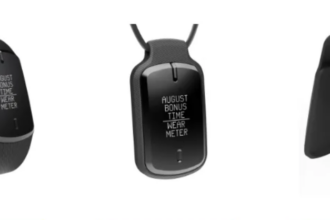Wordle has taken the world by storm since its launch, captivating players with its simple yet challenging gameplay. Created by Josh Wardle, this word puzzle game quickly became a daily ritual for many, sparking a community of enthusiasts eager to share their strategies and achievements. In this article, we’ll explore the origins, mechanics, strategies, cultural impact, variants, and future of what we now refer to as the Wordle Phenomenon.
Key Takeaways
- Wordle was created by Josh Wardle as a personal gift, later becoming a global sensation.
- The game involves guessing a five-letter word in six attempts, using color feedback to guide guesses.
- Strategic choices, like starting words and letter combinations, can improve your chances of winning.
- Wordle has influenced social media trends and inspired numerous spin-offs and variants.
- As a part of gaming history, Wordle’s popularity has prompted discussions about its legacy and impact on puzzle games.
The Origins Of The Wordle Phenomenon

How Wordle Started
So, where did this whole Wordle craze even come from? Well, it’s a pretty cool story, actually. Wordle was created by Josh Wardle, a software engineer, as a gift for his partner, who loved word games. It wasn’t some big corporate project or anything; it was just a personal thing he built for someone he cared about. How sweet is that?
The Creator’s Inspiration
Josh Wardle’s inspiration wasn’t just about making a fun game; he wanted something that he and his partner could enjoy together. He also wanted to create a game that respected the player’s time. That’s why there’s only one daily Wordle. It’s not designed to be addictive, but rather a pleasant, short mental exercise you can look forward to each day. It’s a simple concept, but it’s clear that a lot of thought went into the design.
Rapid Growth and Popularity
Wordle’s rise to fame was pretty meteoric. It started small, shared among friends and family, but then it just exploded. Here’s a few reasons why:
- Simplicity: The rules are easy to understand.
- Shareability: The grid of colored squares is perfect for social media.
- Limited Supply: One puzzle a day keeps people coming back without burning out.
The genius of Wordle is in its constraints. By limiting players to one word per day, it creates a sense of anticipation and prevents the game from becoming a time sink. This scarcity, combined with the social aspect of sharing results, fueled its rapid spread.
Eventually, the game got so popular that The New York Times bought it. It’s still free to play, though, which is good news for everyone who’s hooked. It’s amazing how a simple word puzzle created as a personal project became a global phenomenon.
Understanding The Game Mechanics

Basic Rules of Wordle
Okay, so here’s the deal with Wordle. It’s pretty straightforward. You get six tries to guess a five-letter word. That’s it. No hints beyond the color-coded feedback after each guess. It’s a daily puzzle, so everyone’s trying to figure out the same word. It’s simple, but that’s what makes it so addictive. You can easily play global word-guessing game every day.
How to Make a Guess
Making a guess is easy. You just type in a five-letter word and hit enter. The game then tells you how close you are. But here’s where it gets interesting. You can’t just type in random letters. It has to be a real word. The game will reject it if it’s not in its dictionary. So, you need to have at least a decent vocabulary, or be good at making educated guesses.
Interpreting Color Feedback
This is where the magic happens. After each guess, the letters change color. Here’s what the colors mean:
- Green: The letter is correct and in the right spot.
- Yellow: The letter is in the word, but in the wrong spot.
- Gray: The letter is not in the word at all.
The color feedback is the key to cracking the Wordle code. You use this information to narrow down the possibilities with each guess. It’s like a process of elimination, but with colors. It’s not always obvious, and sometimes you get stuck, but that’s part of the fun.
Wordle’s color-coded feedback system is more than just a visual aid; it’s a carefully designed communication tool. It provides players with precise information about their guesses, allowing them to refine their strategies and approach the puzzle with increasing accuracy. This feedback loop is what makes Wordle so engaging and rewarding, as players feel a sense of accomplishment with each correct deduction.
Strategies For Winning Wordle
Choosing the Best Starting Word
Okay, so you wanna up your Wordle game? It all starts with that first word. Seriously. Picking a good starting word can make a huge difference. It’s not just about guessing any random five-letter word. You want something with common letters, especially vowels. Think about it: the more common letters you get in your first guess, the more information you have to work with. Some people swear by words like "ADIEU" or "AUDIO" because they have a lot of vowels. Others prefer words with common consonants like "STARE" or "CRANE". Experiment and see what works best for you. It’s all about gathering as much intel as possible right off the bat. For today’s Wordle, it’s recommended to start with one of the best initial words to maximize your chances of success.
Letter Frequency Considerations
Ever think about how often certain letters show up in English words? It’s a big deal in Wordle. Some letters are way more common than others, and knowing this can seriously help you narrow down your guesses. Like, "E" is super common, followed by "T", "A", "O", and "I". "Q" and "Z"? Not so much. Keep this in mind when you’re trying to figure out what letters to use. If you’ve already ruled out the common ones, then yeah, maybe take a shot with a less frequent letter. But usually, sticking with the high-frequency letters is a solid strategy. Here’s a quick rundown:
- Most Frequent: E, T, A, O, I
- Next Tier: N, S, H, R, D
- Less Common: L, C, U, M, W
- Rare: F, G, P, Y, B, V, K, X, J, Q, Z
Common Letter Combinations
It’s not just about individual letters; it’s about how they pair up. Certain letter combinations pop up all the time. Think about "SH", "CH", "TH", "ST", and "ER". These are way more common than you might realize, and if you’ve got a couple of letters figured out, considering these combos can be a game-changer. Also, pay attention to double letters. Words like "LLAMA" or "JELLY" are more common than you think. Keeping an eye out for these patterns can help you crack the code faster.
I’ve found that visualizing a mental list of common prefixes and suffixes helps a lot. Things like "UN-", "RE-", "-ING", "-ED", and "-LY" can give you a leg up, especially in the later guesses when you’re down to the wire. It’s like having a secret weapon in your Wordle arsenal.
The Cultural Impact Of Wordle
Wordle in Social Media
Wordle’s design practically begged to be shared. The simple grid of colored squares, devoid of letters, became instantly recognizable on platforms like Twitter and Facebook. It allowed players to brag about their successes (or commiserate over their failures) without spoiling the word for others. This built-in sharing mechanism was a key ingredient in its viral spread. People love to share their wins, and Wordle made it easy and visually appealing. It also sparked conversations and friendly competition among friends and family.
Community Engagement
Wordle fostered a strong sense of community. The shared experience of tackling the same puzzle each day created a unique bond among players. People discussed strategies, shared starting word tips, and even developed their own Wordle-related memes and jokes. This sense of community extended beyond social media, with people discussing the game at work, school, and family gatherings. It was a common ground, a daily ritual that brought people together. The game’s simplicity made it accessible to everyone, regardless of age or background, further contributing to its widespread appeal. Playing games on Mashable can be a great way to connect with others.
Wordle’s Influence on Other Games
Wordle’s success spawned a wave of similar word-based and puzzle games. Its simple yet addictive formula proved to be a winning combination, inspiring developers to create their own variations on the theme. Some focused on different word lengths, while others introduced new mechanics or themes. This influx of Wordle-like games demonstrated the game’s significant impact on the puzzle gaming landscape. It showed that there was a large audience for simple, engaging, and shareable puzzle games. You can even find Wordle alternatives if you want to try something new.
Wordle’s impact extends beyond just inspiring new games. It also highlighted the power of simple, well-designed games to capture the public’s imagination. It reminded developers that games don’t need to be complex or graphically intensive to be successful. Sometimes, the simplest ideas are the most effective.
Exploring Wordle Variants
Wordle’s popularity has spawned a whole ecosystem of variations, each putting a unique spin on the core gameplay. It’s pretty cool to see how many different ways people have found to play with the same basic idea. Let’s check out some of the more interesting ones.
Different Game Modes
Beyond the standard daily word, there are a bunch of different ways to play. Some variants offer unlimited plays, which is great if you just want to keep guessing. Others change the word length, making it either easier or harder. There are even versions that introduce new rules, like allowing multiple guesses per line or changing the color feedback system. The variety keeps the game fresh and interesting, even for seasoned players.
Fan-Made Alternatives
The internet is full of fan-made Wordle alternatives. Some focus on specific themes, like movies, books, or even scientific terms. Others are designed to be more challenging, using obscure words or requiring you to guess multiple words at once. Here are a few examples:
- Quordle: You have to solve four Wordles simultaneously.
- Dordle: Solve two Wordles at the same time.
- Octordle: An even more intense version where you solve eight Wordles concurrently.
It’s amazing how creative people can get when they’re inspired by a simple game. These fan-made versions show just how much potential there is for expanding on the original Wordle concept.
Cross-Genre Variations
Some developers have taken the core Wordle mechanic and blended it with other game genres. For example, there are versions that combine Wordle with elements of strategy games, puzzle games, or even RPGs. These cross-genre variations cave logic puzzles offer a completely new experience, appealing to players who might not normally be interested in word games. You can even find apps like "Word Guess Challenge" or "Wordly – Daily Word Puzzle" on various app stores. It’s a testament to the versatility of the Wordle formula.
The Future Of The Wordle Phenomenon
Potential Updates and Changes
What’s next for Wordle? It’s a question on many players’ minds. While the core gameplay is simple, there’s always room for improvement and evolution. One possibility is the introduction of new game modes that add variety and challenge. Think daily challenges with specific themes, or even collaborative modes where players work together to solve a puzzle. The NYT could also tweak the algorithm to make the word selection more diverse, avoiding obscure words or those with repetitive letters.
Sustaining Player Interest
Keeping players engaged over the long term is a challenge for any game, especially one as simple as Wordle. Here are some ideas:
- Leaderboards and Achievements: Adding a competitive element could motivate players to improve their scores and compete with friends.
- Themed Puzzles: Introducing themed puzzles related to current events, holidays, or specific topics could keep the game fresh and relevant. For example, a today’s Wordle review could be themed around books or movies.
- Integration with Other NYT Games: Cross-promotion and integration with other NYT games like Spelling Bee or the Crossword could create a more cohesive and engaging gaming experience.
Wordle’s success hinges on its simplicity and accessibility. Any changes must be carefully considered to avoid alienating existing players or making the game too complex. The key is to find a balance between innovation and preservation of the core gameplay.
The Role of Community Feedback
The Wordle community has always been a vital part of the game’s success. Listening to player feedback is crucial for shaping the future of Wordle. This includes:
- Actively soliciting feedback through surveys, forums, and social media.
- Responding to player concerns and addressing any issues promptly.
- Involving the community in the development process by beta-testing new features and game modes.
By working closely with its community, the NYT can ensure that Wordle remains a beloved and engaging game for years to come.
Wordle’s Place in Gaming History
Comparison to Other Viral Games
Wordle’s rise to fame wasn’t unique, but its staying power might be. Think about games like Flappy Bird or even the early days of Angry Birds. They exploded in popularity, but faded pretty quickly. Wordle, however, managed to stick around longer, largely due to its simplicity and the daily puzzle format. It shares some DNA with older puzzle crazes like Sudoku or even crosswords, but the social sharing aspect really set it apart. It’s interesting to see how different games capture the public’s attention and how long they can hold it.
Legacy of Wordle
Wordle’s impact is more than just a fleeting trend. It showed that simple, accessible games can still become massive hits. It also highlighted the power of social sharing in spreading a game’s popularity. It’s easy to see how Wordle started a trend of daily puzzle games, and its influence can be seen in the numerous clones and variations that popped up. It’s a reminder that you don’t need fancy graphics or complex gameplay to create something engaging.
- Popularized the daily puzzle format.
- Demonstrated the power of social sharing.
- Inspired a wave of similar games.
Wordle’s legacy will likely be as a game that brought a sense of community and shared experience to a global audience during a time when people were looking for connection. Its simple design and engaging gameplay made it accessible to everyone, regardless of their gaming experience.
Impact on Puzzle Gaming
Wordle definitely shook things up in the puzzle gaming world. Before Wordle, many online puzzle games were either very complex or aimed at a niche audience. Wordle proved that there’s a huge market for simple, daily puzzles that can be completed in just a few minutes. This has led to a resurgence of interest in puzzle games in general, with many developers now trying to create their own Wordle-like hits. It’s also interesting to see how Wordle has influenced the design of other puzzle games, with many now incorporating elements of social sharing and daily challenges. The game’s success has encouraged developers to explore new ideas and formats within the puzzle genre. It’s a good time to try Mashable’s free version now and see what all the fuss is about.
Wrapping It Up
So, there you have it! Wordle has taken the world by storm, and it’s easy to see why. It’s simple, fun, and a great way to challenge your brain for a few minutes each day. Whether you’re playing solo or sharing your results with friends, it’s all about the thrill of the guess. Just remember, it’s not just about getting the word right; it’s about enjoying the process. So, keep playing, keep guessing, and most importantly, have fun with it! Who knows, you might just become a Wordle master!
Frequently Asked Questions
What is Wordle?
Wordle is a fun word puzzle game where you try to guess a hidden five-letter word in six tries.
How do I play Wordle?
To play, you type in a five-letter word and hit enter. The game will show you which letters are correct and in the right spot.
Why did Wordle become so popular?
Wordle became popular because it’s simple and fun, and people enjoy sharing their results on social media.
Can I play Wordle for free?
Yes, Wordle is completely free to play, and you can find it on the New York Times website.
Are there different versions of Wordle?
Yes, there are many fan-made versions and variations of Wordle, including games that use different themes or rules.
What should I do if I get stuck?
If you’re stuck, try using common letters or think about words that fit the clues you have. You can also look for hints online!













